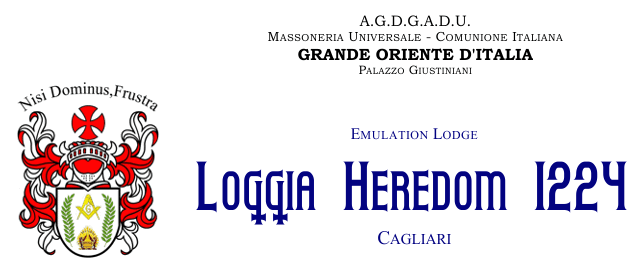
On one side Eames had the craftsman depict different Masonic symbols; on the other he requested the letters of the mnemonic associated with the mark degree and his own personal symbol be engraved. Many mark medals produced between 1790 and 1830 feature, not only the owner’s name and personal emblem, but also the name of his mark lodge or chapter and its location. Without this information or a history of ownership associated with the medal, it is difficult to learn more about D. Eames or where his medal was made. Mark medals in this form—the shape of a shield topped with an open Bible and a square and compasses—often come from New York. We’ve recently posted about shield-shaped medals examples from Middleburgh and Elmira, New York. Though the majority of shield-shaped mark medals in the Museum’s collection are from New York, Mark Master Masons from other areas commissioned medals in this shape. Our collection includes examples from Connecticut, Massachusetts and Pennsylvania.
For his own personal symbol Eames selected two agricultural tools, a scythe and a sickle. Farmers used both tools for harvesting crops—long-handled scythes for cutting fields of crops like hay or grain; short-handled sickles for working in small areas. In terms of Masonic symbols, Eames’ medal features several. They include a square and compasses with an open Bible symbolizing the Great Lights of the Lodge, along with a sun, moon, an ark and an altar. As well, the engraver delineated seven stars, the number required for a perfect lodge; an arch with a keystone, a symbol of Royal Arch Masonry; a beehive, standing for industry; the letter G, symbolizing God or geometry; and a floor comprised of light and dark tiles, representing the good and evil in life. In incising the letters and symbols onto the medal, the engraver used different tools and techniques to mark its smooth surface. With a graver, or engraving tool, with a point shaped like a letter “v,” the craftsman cut lines into the silver. The force he used helped determine the depth and width of the line. To suggest the slightly uneven lines of the Bible’s printed text, the engraver may have wielded a rolling tool, or roulette, to form a line made out of little dots cut into the metal. On the side of the medal that bears the mark degree mnemonic, the craftsman rocked a graver with a flat or slightly rounded point back and forth to make the wavy circle that surrounds Eames’ mark. He used a similar graver with a flat point to cut the decorative border on the side of the medal that bears Eames’ name. Drawing on his experience, the craftsman who made this medal created a distinct badge that suited D. Eames’ needs and wishes.

